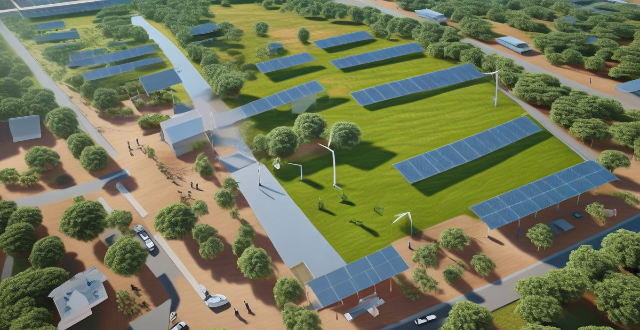The wind energy industry faces several challenges including intermittency, site selection, manufacturing issues, maintenance and reliability concerns, and environmental impact. Addressing these challenges requires innovation, policy support, and collaboration between stakeholders and communities.

Challenges Faced by the Wind Energy Industry
The wind energy industry, despite its rapid growth and potential for renewable energy, faces several challenges that need to be addressed for sustainable development. Here are some of the key challenges:
Intermittency and Unpredictability
One of the main challenges faced by the wind energy industry is the intermittency and unpredictability of wind resources. Wind turbines rely on consistent wind speeds to generate electricity, but wind patterns can be highly variable and unpredictable, making it difficult to ensure a steady supply of power. This can cause fluctuations in grid stability and require backup power sources or storage solutions.
Site Selection and Land Use
Finding suitable sites for wind farms can also be a challenge. Ideal locations typically have high average wind speeds, minimal turbulence, and limited obstacles such as buildings or trees. However, these locations may not always be available or practical due to factors such as land ownership, environmental concerns, and community opposition. Additionally, wind turbines require significant amounts of space, which can impact local ecosystems and wildlife habitats.
Manufacturing and Supply Chain Issues
The manufacturing process for wind turbines involves complex engineering and specialized materials, which can lead to supply chain issues and delays. Additionally, there is a growing demand for larger and more efficient turbines, which requires further innovation in manufacturing techniques and materials. These challenges can increase costs and limit the scalability of the industry.
Maintenance and Reliability
Wind turbines require regular maintenance to ensure their long-term reliability and performance. This includes tasks such as lubrication, blade inspections, and component replacements. However, accessing turbine components at height can be challenging and dangerous, leading to increased labor costs and safety risks. Furthermore, unexpected failures or breakdowns can result in downtime and lost revenue for wind farm operators.
Environmental Impact and Community Acceptance
While wind energy is considered a clean and renewable source of power, there are still environmental impacts associated with its development. For example, construction activities can disturb local ecosystems and wildlife habitats. Additionally, some communities may oppose wind farm projects due to concerns about noise pollution, visual impacts, and property value declines. Addressing these issues requires careful planning and engagement with affected stakeholders.
In conclusion, the wind energy industry faces several challenges related to intermittency, site selection, manufacturing, maintenance, environmental impact, and community acceptance. Addressing these challenges will require continued innovation in technology, policy support, and collaboration between industry stakeholders and affected communities.